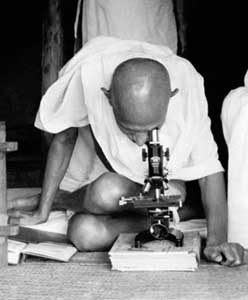The bag kills the fear. The bag is the mindsaver.



Above: retro/vintage flight bags from KLM and Aeroflot, from inretro.net. Below: my bag..
Today, I bought a bag, and I fell in love with my bag.
My bag is a dorky bag. I wouldn't buy or wear it under other circumstances. It's like a wierd zipper-heavy backpack-influenced re-creation of airplane bags that the airlines used to give out in the 1960s, but without the cool retro airline logo design.
REI calls it a "Boarding Bag"; like its predecessors, it's designed to be a small carry-on bag that holds the stuff you want on an airplane journey. Probably only someone who was a little worried about flying would buy such a thing. I didn't buy it for flying. I bought it for the hospital. But I did buy it because I was worried.
To explain this dorky-bag purchase, I must first explain that among medical students, interns, and residents, there are white coat people and there are bag people.
White coat people take their notes and reference books and PDAs and energy bars and reflex hammers and shove them all into the various pockets of their short white coats. The very disciplined or the wildly neglectful can get away with this easily: either you pare your carry-around stuff down to an incredibly small amount of stuff, in which case your white coat can easily handle it; or you simply leave all your stuff at home and try to get by without it. (In which case you never look anything up unless you're sitting at a computer terminal, and you test your patients' reflexes by hitting them with the end of your stethoscope.)
The much more common approach is to jam your pockets full of as much stuff as you can get into them--and at my hospital, the pockets are really big, and durable. A woman at the education office said, "I had students show me how big the other hospitals' white coat pockets were, and then I went bigger." My hospital is nothing if not scrappily competitive.
Unfortunately, this creates two more problems: the gunfighter problem, and the water-carrier problem. Because there is so much stuff bulging out of your pockets, you have to walk around with your arms out, like a gunfighter, or a police officer. Also, the stuff is heavy and usually poorly-balanced, and weighs down on the doctor-in-training's shoulders and back, leading the unfortunate coat-wearer to walk around burdened as if constantly carrying water from a well.
For these reasons I've almost always been a bag person. But my bags are usually too big. For instance, I have a big black messenger bag that can carry a whole desk inside of it, and I'm a little bit of a pack rat, so that by the end of a rotation the bag usually does actually have about as much in it as my desk at home has on it. That means that the bags are heavy, and therefore they solve only the gunfighter problem but not the water-carrier problem.
Worse still, I'm constantly having to leave the bags in places like underneath desks in nursing stations, or in call rooms, because I need to go do something where I don't want the extra weight. Or I take the bags off when I'm examining patients, in which case I end up leaving the bags in patients' rooms. Having to come back into a patient's room to retrieve my stuff is a little embarrassing; it seems like a pretty amateur move, and not very confidence-inspiring, especially in terms of my confidence in myself if not for my patients' confidence in me.
I saw an intern this spring with a bag that seemed to solve these problems. Small enough to keep with him, large enough to carry the right amount of stuff, it looked just right. I asked him where he'd got it; and today, I chose this bag as my version of it.
Afterwards, I kept looking at the bag; looking inside it again to think about what I would put in its pockets; zipping and unzipping its various compartments. I would be able to put private personal things in private personal places, my notes in easily accessible places, and my reflex hammer somewhere handy. I could carry my medicine manual and my energy bars and my headache medicine and a little bottle of water. But the bag won't carry more than that--so I don't think I'll be able to jam it so full of stuff that it will become unwieldy and impossibly heavy, like most of my other bags.
I was so in love with my bag that it became clear that my love had gone far beyond the bag itself. My bag had become my metaphor: it would give me organization, control, and my own little secure space within the hospital, even if it is only about 9 inches by 12 inches by 4 inches. Seeing all of these things in my bag, I realized not only why I loved my bag--or at least, the idea of my bag--but also what I had been fearing the most about internship. I fear becoming disorganized; losing control; and never having a space of my own. The first two might harm my patients; the third will make me crazy. Until now. Now I have my bag. Now I need not fear, and I will not. Because fear is the mindkiller.







